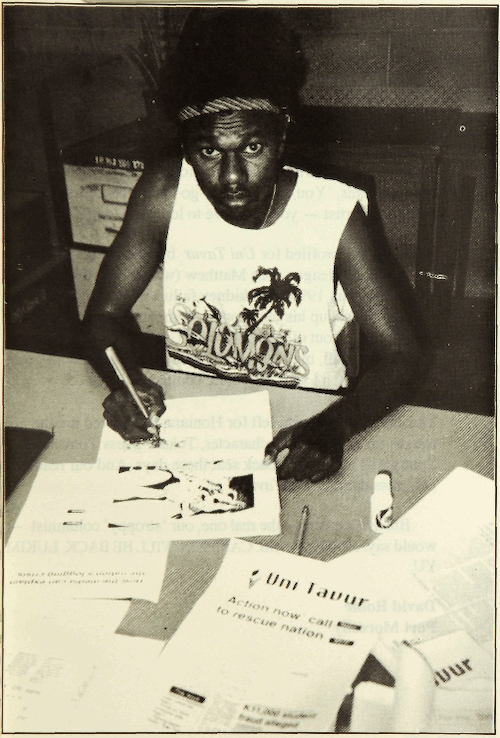Edited by David Robie | Cartoons by Campion Ohasio
Twenty five years ago in Melbourne I encountered a young cartoonist in Melbourne with a flair and panache that was remarkable. His name is Michael Leunig. At the time I was editor of the Sunday Observer and I felt Michael was destined for an astounding future. His distinctive whimsical and poetic style — Barry Humphries once described it as “murky, melancholy and marvellous” — eventually took him to the top of Australian cartooning. His socially aware messages and his characteristic flippant duck were a remarkable antidote to the humourless puritans of the era. He once drew me his characteristic gallivanting duck balancing a teapot on its head as I left Melbourne for greener pastures.
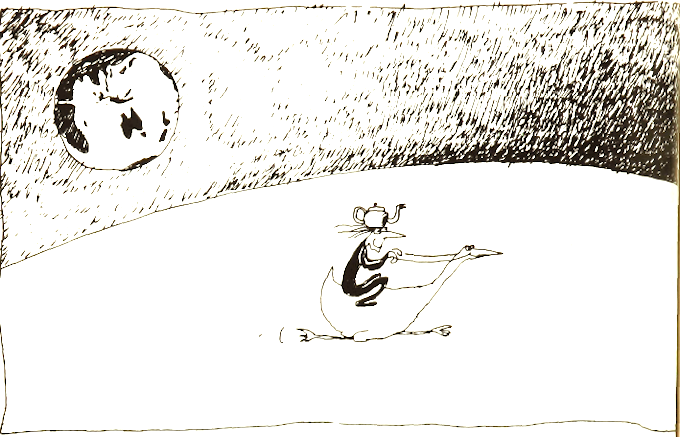
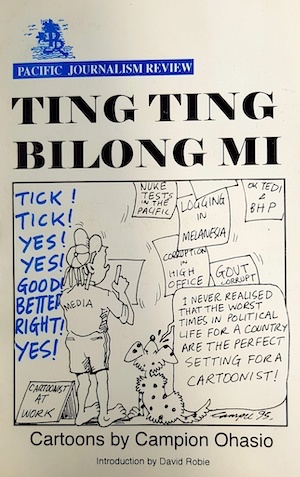
Now I have encountered another cartoonist, this time from the Solomon Islands, who has also impressed me. And in an environment where cartoonists are rare and an endangered species. Campion Ohasio, who joined our journalism course [at the University of Papua New Guinea] in 1993 as a young 22-year-old from Nariekeara village in South Malaita, was deceptively quiet at first. But his trenchant abilities with the pen soon became apparent — in spite of the fact that he has never had formal art lessons. Compared with the subtleties of a Leunig, Ohasio has a certain rawness in his style. But his directness is refreshing in Island societies that are often culturally reluctant to get to the point, let alone be brutally honest.
At first Campion Ohasio, encouraged by senior Post-Courier journalist Leigh Martin who was at the time tutoring journalism students on Uni Tavur, contented himself with local issues on campus at the University of Papua New Guinea. The issues were plentiful and painful, and Ohasio treated them robustly. But by the end of 1993, he was restless for more challenges and I persuaded him to tackle national — and Pacific — issues. And before the end of the following year, Ohasio was also making his mark with regional issue cartoons. He developed a “Class of 93” strip, featuring Tome and his dog friend, Spotty. “The experience,” he says, “has been one of most rewarding things that have happened to me as an overseas student studing and living in PNG.”
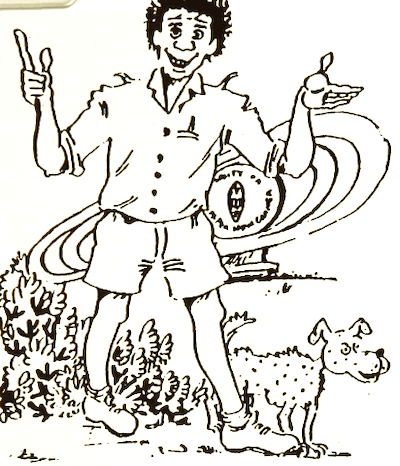
Before cartooning for Uni Tavur, he had been doing some editorial cartoons for the Solomons Voice, one of the weekly newspapers in Honiara where he worked in 1992 as a graphic artist and reporter. “I had limited knowledge about what cartooning is really all about,” Ohasio admits. “I like reading cartoons and I usually wonder how cartoonists think up ideas fast to meet deadlines — especially on the daily papers.”
The Independent’s Jada Wilson and the popular “Grassruts” strip creator, Bob Browne, now a lecturer at the university’s Creative Arts Faculty, have influenced Ohasio, yet he has been developing his own irreverent style. Environmental and logging cartoons, along with land rights and French nuclear tests, have often been at the forefront of his work.
“Cartoonists probably are the only artists in the world who are expected to come up with a creation every day, or week depending on which media organisation they are attached to,” says Ohasio. “In my case it has been every two weeks. It is definitely not an easy job — but a country such as PNG, or in Melanesia, or even in the wider South Pacific context,
there are more things going wrong than right. A perfect setting for a cartoonist. As Sudhir Tailang, one of India’s rising cartoonists, says: ‘Cartooning is an art of dissent, of protest. Cartoonists look for negative things and find plenty of them. There’s no place for a cartoonist in Utopia.'”
I have to admit there were frustrations at times, as is often the case for people with creative abilities. Campion Ohasio’s definition of editorial deadlines was unnerving, even by “Pacific time” standards. Many were the times when we were about to go to press with me tearing my hair out (or, at least, what I have left) trying to find “Campi”. But he would always turn up just in the nick of time and with the cartoon theme spot on to the issue at hand. Once I had literally given up after sending out our “press gang” to locate Campion. In fact, I had made arrangements to reprint an earlier cartoon. However, as I walked out my office door to leave for the Post-Courier, the Pacific’s largest daily, which prints Uni Tavur, Ohasio arrived breathless — and with a scathing cartoon about Ok Tedi mine, our front page lead. But in the end it was always a pleasure to have “Campion’s Comment” and another instalment in the Class of 93 . . . or 94 . . . or 95 . . . in print.
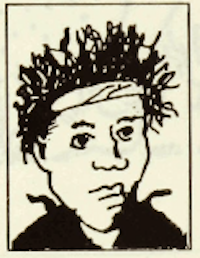
Campion Ohasio is the third-born of a family of six children. Throughout his schooling he never had art lessons. However, his artistic talents and motivation steered him towards his ambitious dream. During secondary schooling at St Joseph’s, Tenaru, he never had any art lessons yet his work was soon recognised by staff. He was given the job of illustrating the school magazine. In 1986, he won a cultural exchange opportunity to visit museums and art galleries in Brisbane and Canberra. Two years later he made another visit to Australia for the World Expo exhibition in Brisbane. In 1989, he sought a scholarship for an art school but his requests fell on deaf ears.
Ohasio ended up studying journalism at the University of Papua New Guinea in 1991 — the year the campus was closed for a semester because of student protests over a controversial pay rise for MPs. Why didn’t he get a chance on a creative art course? The Solomon Islands government only provides scholarships for economics, accounting and science students. Unfair, says Ohasio. But, as he points out to other students, “You don’t have to go on an arts course to become an artist — you just have to look and learn.”
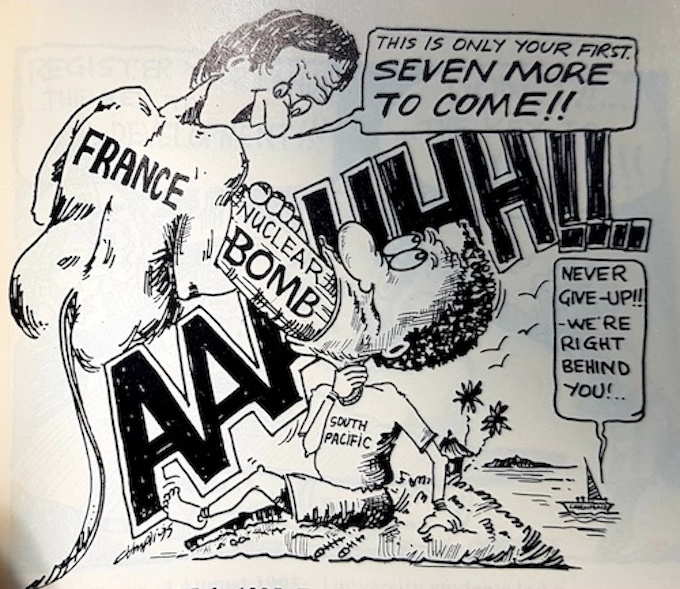
When he was profiled for Uni Tavur by a Milne Bay journalism student colleague, Rex Matthew (who tragically died aged 22 in May 1995 from kidney failure), Ohasio said he was keen to set up his own comics company in the Solomon Islands. A leaf out of Bob Browne’s Grassroots comic books. “After all, my journalism experience would be of great help to me when I start the comic company,” he said.
The day before Ohasio left for Honiara, he showed me the roughs for his new strip character, Toka. I guess Toma and Spotty will be taking a back seat these days. And our readers will miss them in Uni Tavur. But as Conman — the real one, our “stroppy” gossip columnist — would say: NOKEN WARI. CAMPION WILL BE BACK. LUKIM YU.
David Robie
Port Moresby
- This is the introduction to Tong Ting Bilong Mi, the collection of Ohasio’s cartoons published by Pacific Journalism Review. See the book collection online here.
- Ohasio, C. (1996). 1993: The campus. Pacific Journalism Review : Te Koakoa, 3(1), 13-39. https://doi.org/10.24135/pjr.v3i1.565
- Campion Ohasio the artist
- Campion Ohasio, multimedia manager at Indigenous Media, Honiara, Solomon Islands.
